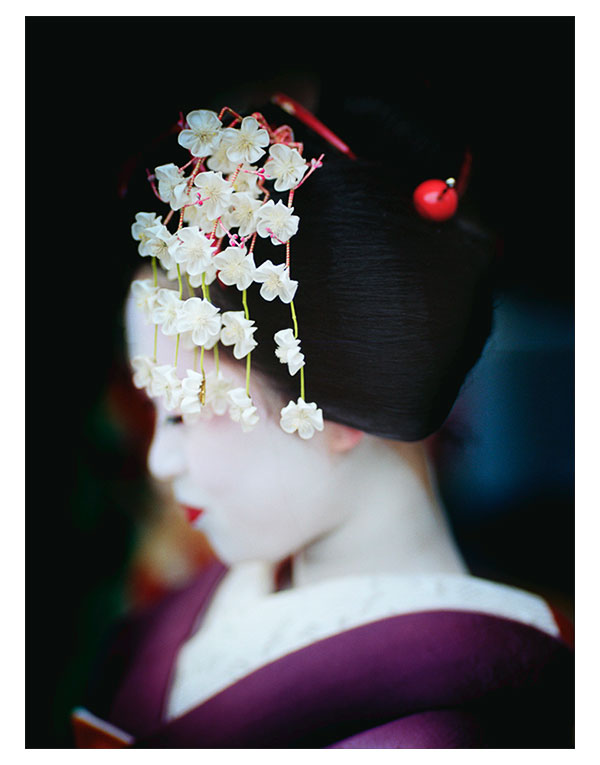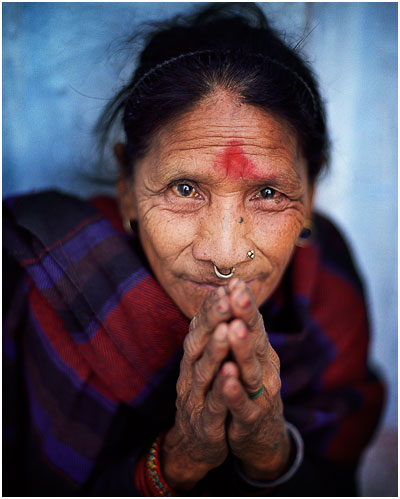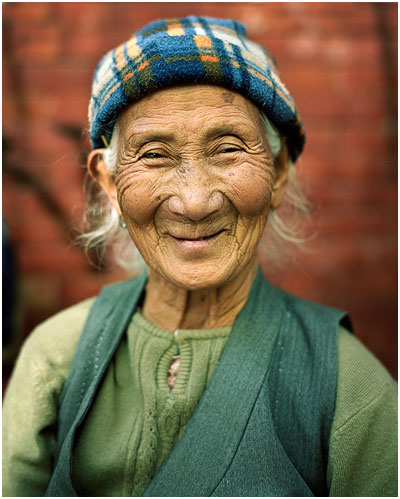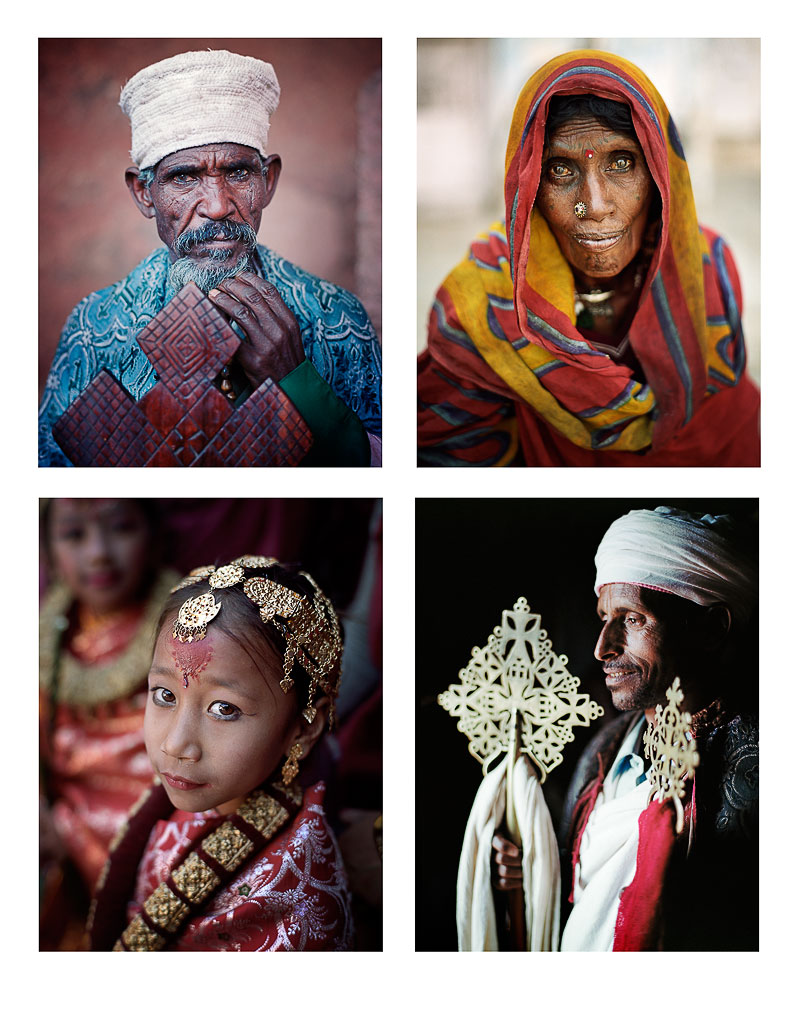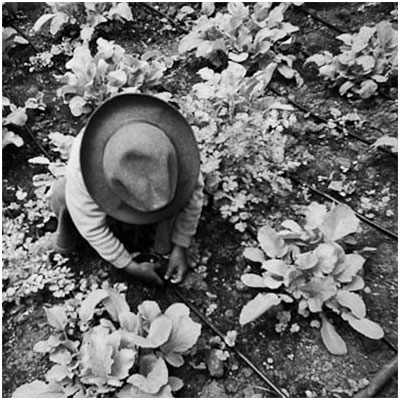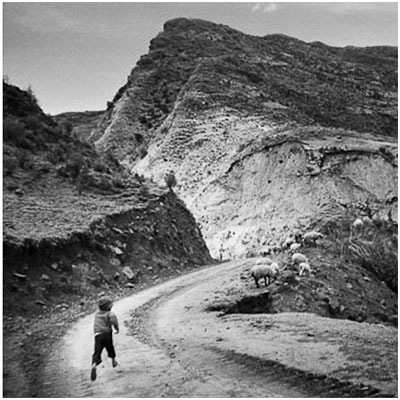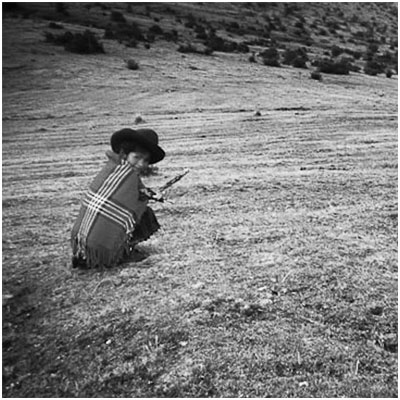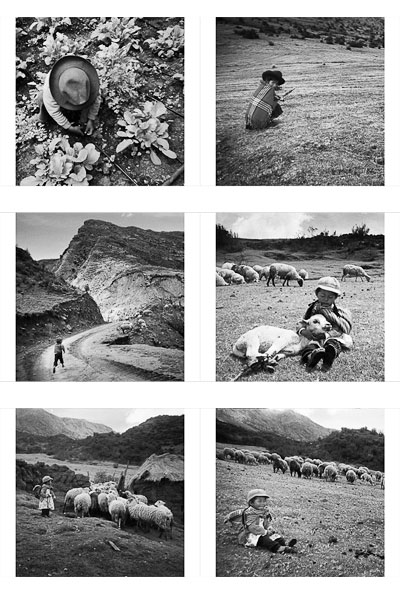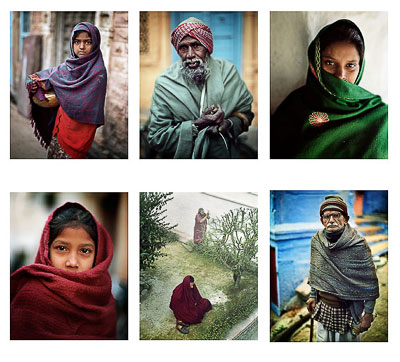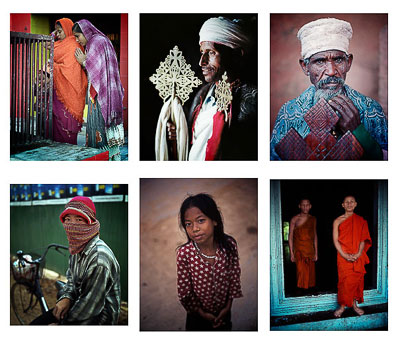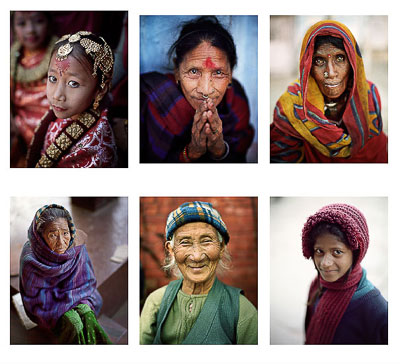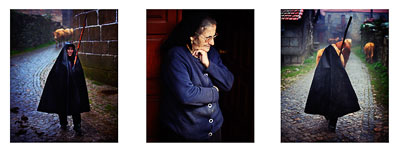I'm just on my way home from Bhutan, where I had a really great trip making some new portraits. Portraits? Yep - that's right. I don't just do landscape images, but when I get the chance, I love to photograph people.
It's been a while though and I've found my mind is bringing back earlier memories of my time in India and Nepal in 2009. I feel very reflective about it as I remember who I was at that time - how I felt about life and the ideals I held at that time. This recent trip to Bhutan has made me think about the implications of my photography with regards to how I live my life now and how I've changed over the years.
Portraits, amassed throughout the years.
Image © Bruce Percy
Every interaction we have in our lives to some degree, becomes a part of us. We are always collating and storing away our experiences. They shape and form our opinions and ideals as we travel through our lives.
In essence, we are our memories. They shape who we are.
I think the same ideal holds true with the work we create. Building up a collection of work over many years is like being in the middle of an unfolding story, one that is being written and will not be completed until we put down our camera for the very last time.
I often rediscover my memories through my older work
Images © Bruce Percy
As I've looked back at my earlier work, I've seen how much I've grown as a photographer. This has been in tandem with me thinking about how much I've learned as a human being from all the interactions I've had with others through my photography.
For example in Nepal I spent three weeks getting to know many of the temple worshipers around the Kathmandu valley, while in Cambodia I met two girls who failed to sell me bracelets for many days until they became indifferent to my presence. It was only then that I was able to captured a photograph of them fishing at the side of a lake. In Japan I stood under a marquee tent and captured a Geisha as she was looking away from me and in Ethiopia I got to know many of the deacons of Lalibela through my guide Muchaw.
I'm sure these experiences have shaped my opinions and outlook over the years. How could they not?
I often think that photography is the act of submission: we give ourselves permission to go out there and enquire, but we also give ourselves the permission to accept what experiences come our way.
Now that I have ended my trip to Bhutan, I am excited to think that my experiences and memories from this trip will shape and help define the work I edit, and that this work over time, will become part of my portfolio but perhaps more importantly, it will become part of me. Because once a new work is born, it is as though it was always here, waiting to be acknowledged and accepted as part of who I am.










